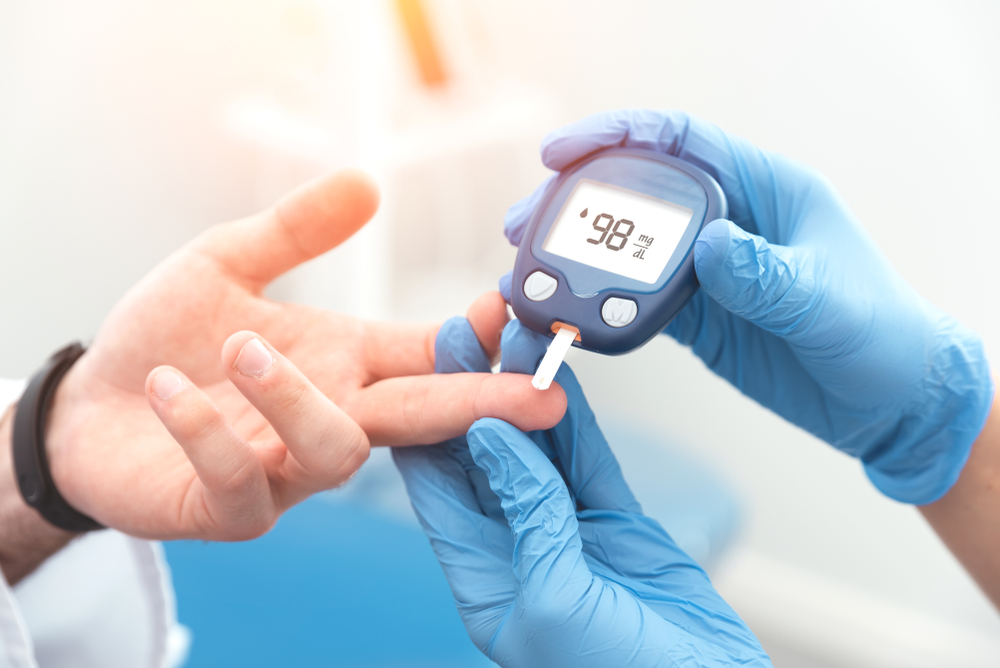
If you or someone you love struggles with diabetes, then being able to recognize the signs and symptoms of diabetic ketoacidosis (DKA) is especially important for preventing a diabetic emergency.
A few symptoms to look out for include fruity breath, high blood glucose levels, and high ketone levels in the urine. If you notice any of these symptoms, call your doctor or head into an emergency room near you immediately. Here are other key signs and symptoms of diabetic ketoacidosis to watch out for.
Warning signs of diabetic ketoacidosis
What are the warning signs of diabetic ketoacidosis? Diabetic ketoacidosis is a serious complication of diabetes, more commonly associated with type 1 diabetes, that happens when the body needs sugar and begins to break down fat cells to get that sugar thus creating ketones. Having high levels of ketones in the blood increases its acidity and can lead to diabetic ketoacidosis.
The signs and symptoms of diabetic ketoacidosis to watch for include:
- High blood glucose levels (240 mg/dL or above)
- High ketone levels
- Frequent urination
- Increased thirst
- Dry mouth
- Weakness or fatigue
- Confusion
- Sugar headache
- Vomiting, stomach pain and nausea
- Fruity breath (DKA)
If you are experiencing any of the more mild symptoms, such as thirst or frequent urination, check your blood glucose and ketones levels. You and your healthcare provider should have already discussed a plan for treating high levels of ketones. After attempting to bring your blood glucose levels down, check both your glucose and ketone levels again in 30 min. If they are still elevated, call your doctor immediately.
When to seek emergency care for diabetic ketoacidosis
If left untreated, DKA can be a dangerous condition resulting in unconsciousness, coma, and in worse cases, death. Therefore it is vitally important that you are aware of the signs and symptoms of diabetic ketoacidosis and know when to seek emergency help.
Call your doctor or go to the emergency room immediately if you are experiencing high or moderate ketones in conjunction with symptoms including:
- Stomach pain
- Fruity breath
- Blood sugar levels remain at 300mg/dL or above and are not responding to at-home treatment
- Vomiting for 2+ hours
- Exhaustion, confusion, or dizziness
- Shortness of breath
The emergency room will be able to offer you dehydration treatment, electrolyte replacement, intravenous (IV) insulin, and can order diagnostic tests to evaluate for any additional complications.
What is the most common cause of diabetic ketoacidosis?
DKA is typically the result of an individual not getting enough insulin, eating enough food, or having low blood sugar. When the body doesn’t have enough insulin or enough sugar to provide the necessary energy, it has to look for that energy from other sources — and the next place it goes is your fat cells. Breaking down fat cells creates an acid known as ketones and contributes to increased levels of ketones in the blood and urine. When there are too many ketones, these high levels can become poisonous and need to be treated immediately.
The process that leads to diabetic ketoacidosis can be triggered by:
- Type 1 diabetes
- Type 2 diabetes
- An infection or illness
- Missed insulin treatments
- Malfunctioning insulin pump
- Heart attack
- Pregnancy
- The use of certain medications
Diabetic ketoacidosis prevention
Diabetic ketoacidosis and other diabetic emergencies are easily preventable. You should always check with your doctor before starting any self-treatment or changing what you’re currently doing. Together, you can create a diabetic treatment plan that includes the following:
- Managing your diabetes. This could be through medication or insulin and may also include making healthy changes to the types of food you eat, the frequency you eat, and your exercise routine.
- Check your blood sugar levels regularly. Testing your levels three to four times a day can help you monitor how your body responds to various lifestyle changes, foods, and modalities of exercise. It can also let you know when something is off or needs to be adjusted.
- Establish a diabetic emergency treatment plan. Talk to your doctor about what to do when your blood sugar or ketone levels are out of range and be sure to share it with those who are most commonly around you.
Head to a Complete Care 24-hour ER for your diabetic ketoacidosis related emergencies
Experiencing or watching someone you love show signs and symptoms of diabetic ketoacidosis can be a frightening experience. But being aware of what to watch for ahead of time and knowing how to treat it, can help you feel empowered in those stressful times.
If you do notice that your levels are not returning back to normal, even after trying at-home treatments, do not hesitate to head into a Complete Care emergency room for treatment. Our freestanding facilities are open 24/7 and offer efficient and effective care with a much shorter wait time. With ER locations throughout Colorado and Texas, including several locations throughout San Antonio, we are ready to take complete care of you.
More Helpful Articles by Complete Care:
- Most Common Reasons For ER Visits During the Holidays
- 5 Winter Health Tips
- Common Causes of Pain in Lower Left Abdomen
- Why Is It Important to Know Family History?
- The Best Dinner For Diabetics at Thanksgiving
